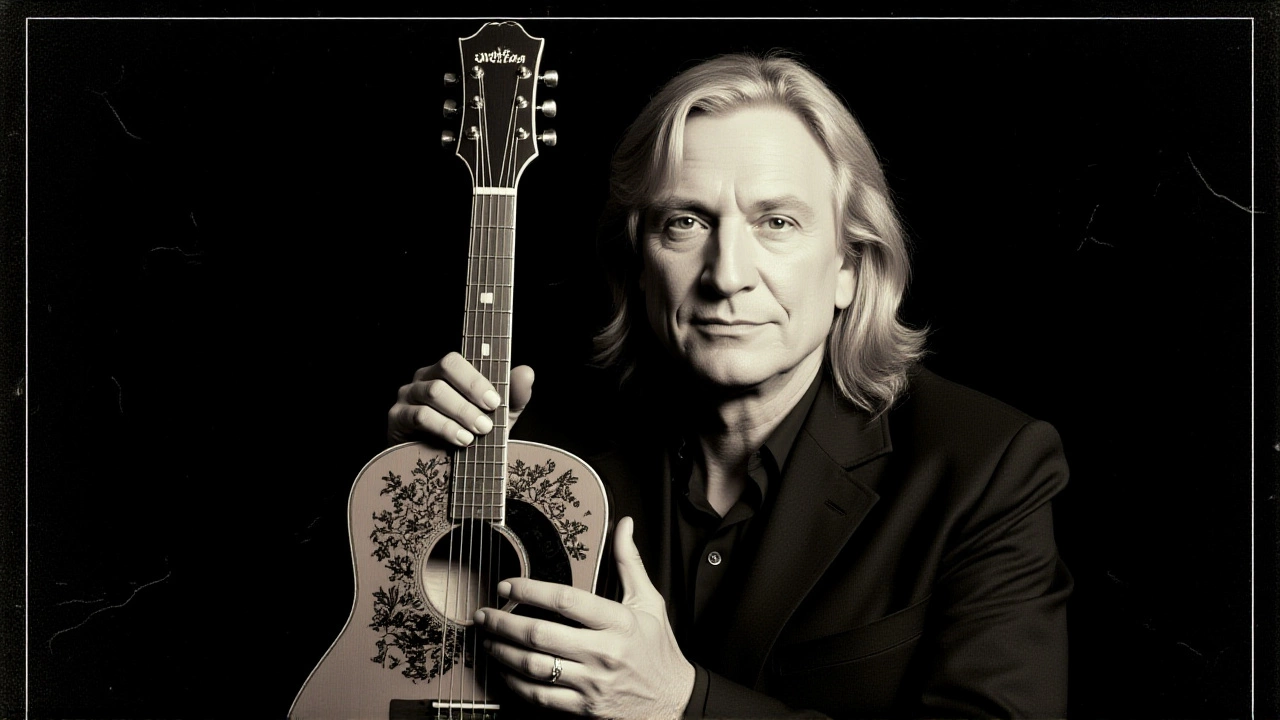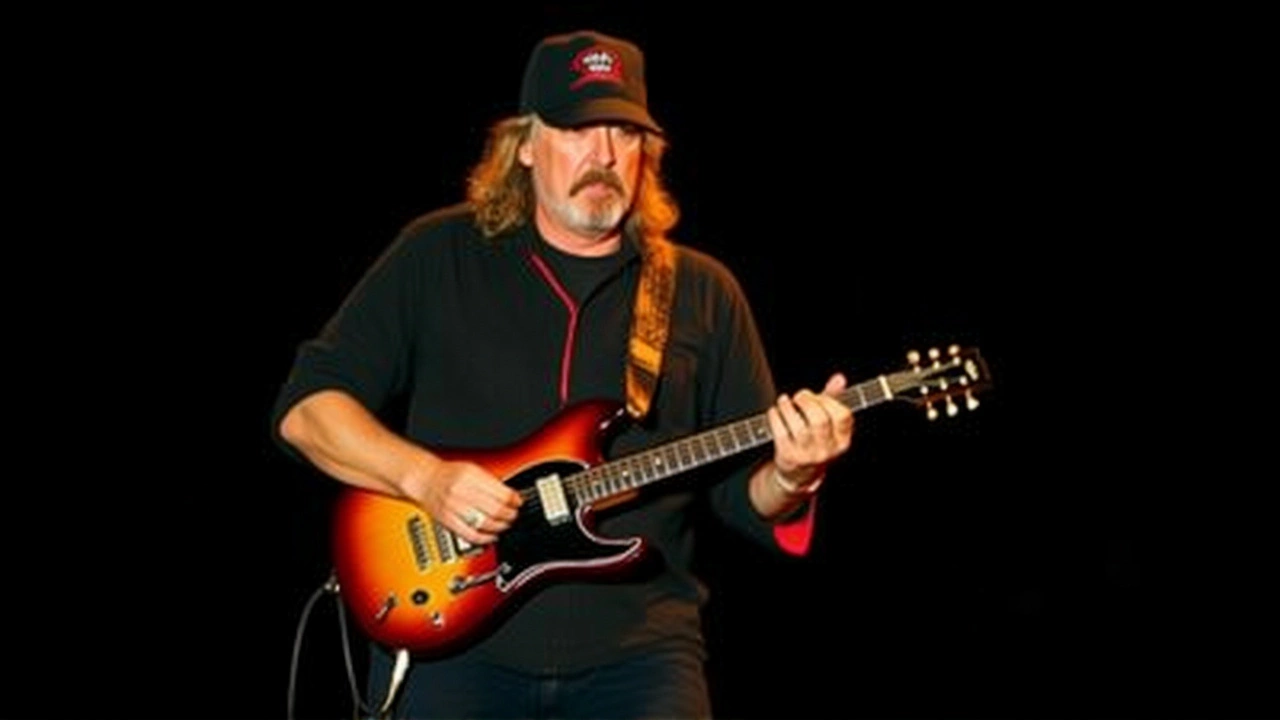When Joe Walsh sat down to recall the making of the Eagles’ 1979 album The Long Run, he didn’t talk about chart-toppers or platinum plaques. He talked about exhaustion. "It was a much more painful birth," he said, describing how the band, already riding high from Hotel California, pushed themselves into creative and emotional collapse. The album dropped at 5:59 a.m. on September 1, 1979 — not with a bang, but with the quiet exhaustion of a band that had run on fumes for 18 straight months. And they weren’t even in the studio the whole time. They were on tour. Then back in the studio. Then back on the road. It was a loop with no exit.
The Weight of a Masterpiece
Hotel California wasn’t just a hit. It was a cultural event. By the time The Long Run was being recorded, it had sold over 16 million copies worldwide. The record label didn’t want another album. They wanted another Hotel California. And the band, especially Joe Walsh and Glenn Frey, felt that pressure like a vise. "The record company didn’t care if we farted and burped on record," Walsh recalled. "They’d put that out. What can we have?" It wasn’t just commercial pressure — it was artistic suffocation. How do you top a song like "Hotel California"? How do you follow a record that defined a generation?Producer Bill Szymczyk, who had guided the Eagles since On the Border in 1974, didn’t mince words. "It was a bitch," he said. "There was the constant pressure of topping Hotel California. There was a lot of angst from everybody. It led to the most nitpicked album I’ve ever worked on."
Recording in the Chaos
The sessions were split between Criteria Studios in Miami and Record Plant in Los Angeles. But the real studio was the tour bus. Guitarist Don Felder admitted they ran out of time — and patience. "We had booked a tour and you can’t un-sell tickets," he said. They’d started with ideas for a double album, but by the end, they were scrambling to finish just seven tracks.Walsh described the process as chaotic. Band members would show up with fragments — a chord progression, a melody, a riff — but no lyrics. "Everyone came in with a little," Szymczyk remembered. "I’ve got this chord change. I’ve got this chorus." They piled up 18 instrumentals before anyone even thought about words. The title track, "The Long Run," came from a moment of dark humor. Walsh recalled Henley looking around the room and saying, "I know what to call this one. Look at us."

The New Faces, The Old Tensions
By 1978, the band had changed. Timothy B. Schmidt had replaced founding bassist Bernie Leadon in late 1977, bringing smooth vocals and a soulful touch. He co-wrote "I Can’t Tell You Why," the album’s most emotionally resonant track — and one of its biggest hits. Walsh himself had joined in 1975, replacing Leadon after the Hotel California tour, bringing a grittier edge to their sound. But the chemistry was fraying. The band wasn’t just working under pressure — they were working under suspicion. Who was writing what? Who was getting too much credit? Who was checking out mentally?"We were like, ‘How the fuck are we going to top Hotel California? This is useless,’" Walsh said. But then something shifted. They stopped trying to outdo their past and just played together in the same room again. That’s when The Long Run finally came alive.
The Hits and the Hangover
The album yielded four singles, but only one reached number one: "Heartache Tonight," co-written by Walsh and Frey. It was a punchy, bluesy rocker — the kind of song that sounded like a band having fun. The rest? "The Sad Café," "Teenage Jail," "The Disco Strangler" — titles that felt like inside jokes or half-formed ideas. The album sold well — over 7 million copies — but it didn’t feel like a triumph. It felt like survival.By 1980, just a year after The Long Run’s release, the Eagles broke up. The tensions weren’t just creative — they were personal. The pressure, the touring, the lack of sleep, the endless scrutiny — it had worn them down. They didn’t record together again until 2007’s Long Road Out of Eden. When asked about that album, Walsh called it "a painful birth." But then he paused. "Not like The Long Run. That one? That one broke us."

Why It Still Matters
The Long Run isn’t remembered as the Eagles’ greatest album. But it might be their most honest. It’s the sound of a band realizing that fame isn’t a reward — it’s a cage. The pressure to replicate perfection doesn’t create art. It creates burnout. Walsh’s candid reflections aren’t just nostalgia. They’re a warning. In an age where streaming algorithms demand constant output, where artists are pressured to churn out hits like factory products, The Long Run stands as a cautionary tale. Sometimes, the most beautiful music is made not when you’re trying to top your past — but when you finally stop trying.Frequently Asked Questions
Why was 'The Long Run' so difficult to make compared to 'Hotel California'?
Unlike Hotel California, which was recorded with more space and creative freedom, The Long Run was made under relentless pressure to match its success. The band was touring while recording, leading to exhaustion. Producer Bill Szymczyk called it the most nitpicked album he’d ever worked on, with band members constantly second-guessing each other’s parts.
Who wrote 'I Can't Tell You Why,' and why was it significant?
Bassist Timothy B. Schmidt co-wrote "I Can’t Tell You Why" with Don Henley and Glenn Frey. It was significant because it showcased Schmidt’s soulful voice and emotional depth, offering a rare ballad on an otherwise rock-heavy album. It became one of the band’s most enduring deep cuts, even if it didn’t top the charts.
How did the recording locations affect the album’s sound?
Sessions alternated between Criteria Studios in Miami and Record Plant in Los Angeles. Miami’s warm, humid environment gave tracks a slightly looser, more organic feel, while L.A.’s polished studios pushed for tighter production. The constant travel between cities added to the band’s fatigue, influencing the album’s uneven energy.
What role did Joe Walsh play in the album’s creation?
Walsh was instrumental in shaping the album’s rock edge, contributing key riffs and co-writing "Heartache Tonight" and the title track. He also pushed back against the perfectionism, urging the band to just play together instead of overproducing. His candid reflections later became the most quoted source on the album’s turmoil, revealing how the pressure nearly destroyed the band.
Why did the Eagles break up so soon after 'The Long Run'?
The album’s grueling creation exposed deep personal fractures. Constant touring, creative clashes, and the weight of expectation left members emotionally drained. By 1980, Glenn Frey and Don Henley were barely speaking. The band’s 1980 breakup wasn’t sudden — it was the inevitable result of a process that had been eating them alive since 1978.
Did the success of 'The Long Run' influence future albums by other bands?
Yes. The album became a textbook case of how not to follow up a mega-hit. Bands like Fleetwood Mac and Boston later took longer breaks between albums, avoiding the treadmill of constant touring and recording. The Eagles’ experience showed that chasing perfection can kill creativity — a lesson that still echoes in today’s music industry.
